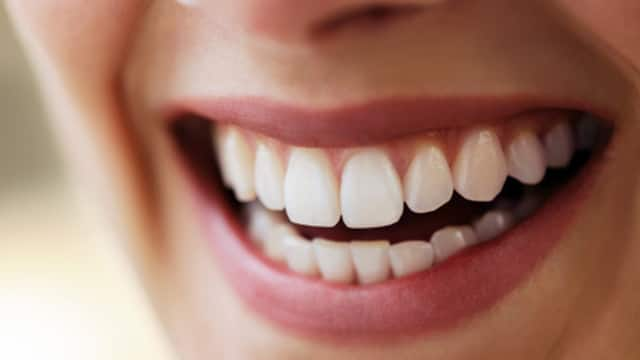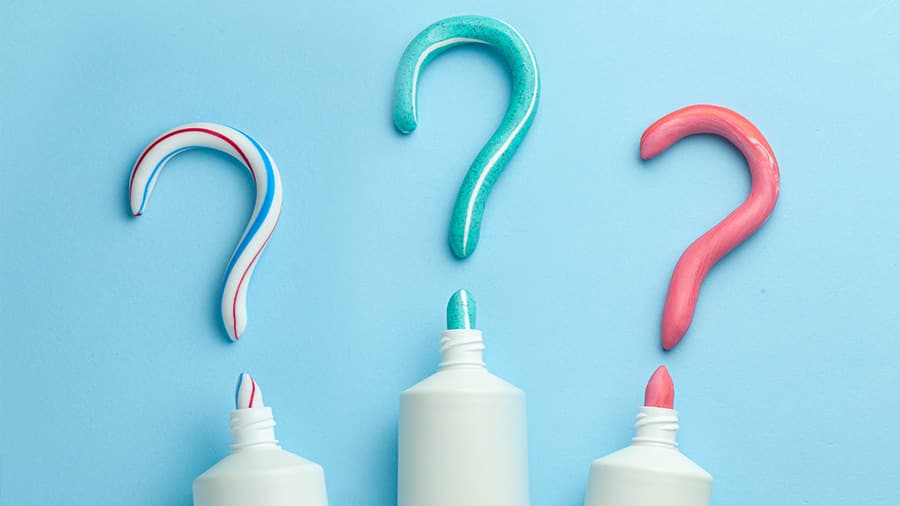This article will focus on teeth bleaching as a teeth whitening method, discussing the bleaching process and the aftercare needed to maintain white teeth. Keep reading to learn everything about the teeth bleaching process and to understand both the risks and rewards associated with it.
What is Teeth Bleaching?
Teeth bleaching, commonly known as teeth whitening, is a procedure that can help brighten your teeth by removing tooth stains usually caused by bacterial pigments, food, and tobacco. This whitening process usually involves using bleaching agents that break down pigmented molecules within the tooth structure, resulting in a lighter shade for your teeth. In contrast, teeth whitening aims to remove surface stains and discolouration from the teeth with the help of the abrasive action of the dentifrices. Both of these procedures can help improve the appearance of your teeth and give you a brighter smile.
Different Methods of Teeth Bleaching
If you want to brighten your smile, several teeth-bleaching methods are available. Each method offers its own advantages and considerations, making it important to choose the right one for your needs. The two primary methods of teeth bleaching are professional in-office bleaching and at-home bleaching kits, which utilise internal or extrinsic bleaching techniques to remove stains and discolouration from teeth.
Professional In-Office Bleaching
Professional in-office teeth bleaching is an effective way to remove intrinsic stains of the tooth structure, which are usually stained due to blood or other fluids. Unlike external bleaching, which brightens teeth from the outside, internal bleaching works from the inside out. This process involves drilling a hole into the pulp chamber, cleaning, sealing, and filling the root canal with a rubber-like substance, and placing a peroxide gel directly into the pulp chamber.
The bleaching agent used in in-office whitening typically consists of a mixture of hydrogen peroxide and sodium perborate as the whitening solution. It is important to note that a dental professional always performs internal bleaching in a dental clinic, and the cost of teeth bleaching may vary based on several factors.
At-Home Bleaching Kits
An at-home teeth bleaching kit is a perfect option for those who do not want to visit a dental professional for teeth bleaching. These home kits typically come with a whitening gel and a device that helps accelerate the gel's whitening effect. The gels and trays included in the home whitening kit are designed to be user-friendly and easy to use. Additionally, some more advanced trays may even have LED lights to further enhance the serum's whitening effect.
This method involves applying bleaching gel to the teeth using customised guard trays, which are shaped to fit your teeth precisely. The whitening gels contain oxidising agents like hydrogen peroxide or carbamide peroxide, which are used for lightening the shade of your teeth. It is important to note that achieving the desired shade with at-home teeth whitening kits may take a few days to several weeks.
Risks and Considerations
Teeth bleaching is generally considered safe for most adults, but it may not be suitable for some. Individuals with the following conditions should consult a dental professional before attempting teeth bleaching:
Extensive restorations: Teeth with porcelain crowns or veneers may not respond well to teeth bleaching treatments.
Crowded or misaligned teeth: Whitening may not effectively reach all areas in the case of misaligned teeth, leading to uneven results.
In addition to these considerations, it is essential to be aware of the teeth bleaching side effects.
Tooth sensitivity: Bleaching agents can cause temporary sensitivity, especially to hot or cold temperatures.
Receding gums: Exposed tooth roots due to receding gums may be more sensitive to bleaching agents.
Consulting with a dental professional can help assess your suitability for teeth bleaching and minimise the risk of side effects. They can also recommend the most appropriate treatment based on your dental health and goals for whitening your smile.
The Teeth Bleaching Process
For an in-office teeth bleaching procedure, the process begins with thoroughly cleaning your teeth to remove any plaque or tartar buildup. Following this, your dental professional may take impressions of your teeth to create custom-fitted bleaching trays. Next, a bleaching agent, typically peroxide-based, is applied to the tooth surface. Depending on the chosen method, a special light or laser may be used to activate the bleaching agent, enhancing its effectiveness. Once the professional whitening treatment is complete, your dentist may also provide post-treatment care recommendations to help you maintain your whitened teeth.
For at-home teeth bleaching, the process involves applying the bleaching agent directly to the teeth using a tray provided in the kit. The tray is custom-fitted to ensure even distribution of the whitening agent across the teeth. Following the recommended usage guidelines is essential to achieving the best results while minimising the side effects of teeth bleaching.
Aftercare and Maintenance
Once you have achieved white teeth through teeth bleaching, it is important to maintain your oral hygiene to maintain the whiteness. Here are some aftercare tips to help you keep your teeth white and healthy:
Brush your teeth regularly using a fluoride-based whitening toothpaste and a soft-bristled toothbrush. You may use Colgate Visible White O2 Teeth Whitening Toothpaste for noticeably whiter teeth starting in 3 days. This new whitening formula with millions of active oxygen bubbles lightens the stains on the teeth, working not only on the surface but from the inside out.
Floss at least once a day to remove any food particles and plaque that may build up between your teeth. You can also use mouthwashes and mouth rinses to enhance your oral hygiene and freshen your breath.
Limit your intake of foods and drinks that may stain your teeth, such as tea, coffee, red wine, and fizzy drinks. If you consume these beverages, try using a straw to minimise contact with your teeth.
Schedule routine dental cleanings and examinations with your dentist to ensure that your teeth are healthy and to detect any issues early on.
To sum up, teeth bleaching has become increasingly popular among individuals who wish to have a bright and radiant smile. While it is generally considered safe for most adults, consulting with a dental professional is crucial, especially if you have extensive restorations or other dental conditions. By following the recommended aftercare tips, including regular brushing, flossing, dental check-ups, and maintaining good oral health, you can maintain your whitened teeth for longer.
Frequently Asked Questions
Is it painful to get your teeth bleached?
Although considered safe for most individuals, the bleaching agent used for teeth bleaching may cause discomfort, including sensitive teeth and gum irritation, for some during the treatment. If you experience prolonged discomfort, it is essential to consult with your dental professional for adequate treatment.Is bleaching good for the teeth?
Teeth bleaching can effectively remove stains and discoloration, helping you achieve a brighter smile. While it is generally safe for most individuals, excessive or improper bleaching can harm tooth enamel and cause sensitivity. Consulting with a dental professional before bleaching can help ensure it is appropriate for your teeth.Can you bleach teeth with braces?
Bleaching teeth while wearing braces is generally not recommended, as it can lead to uneven whitening. It is better to whiten teeth after removing the braces.How much does teeth bleaching cost?
In India, professional teeth bleaching may cost between Rs. 7,000 and Rs. 20,000*. For a more affordable way, you can try using at-home bleaching kits or other teeth-whitening products, including whitening toothpastes, whitening strips, and toothbrushes.* Charges could vary between dentists and cities.
This article is intended to promote understanding of and knowledge about general oral health topics. It is not intended to be a substitute for professional advice, diagnosis or treatment. Always seek the advice of your dentist or other qualified healthcare provider with any questions you may have regarding a medical condition or treatment.
ORAL HEALTH QUIZ
What's behind your smile?
Take our Oral Health assessment to get the most from your oral care routine
ORAL HEALTH QUIZ
What's behind your smile?
Take our Oral Health assessment to get the most from your oral care routine













